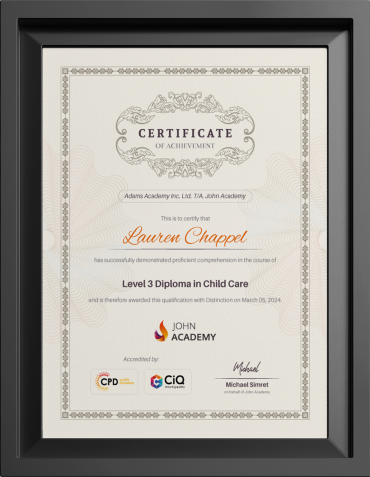

Whether you are a parent, teacher, or caregiver, dealing with challenging behaviour can be frustrating. However, it is possible to alter challenging behaviours. For that, you need to find the root causes of the behaviour and develop effective strategies. This is where the ABC model comes into play. This is a tool where you will use the ABC chart for challenging behaviour to identify triggers and create intervention plans to handle the behaviours.
Get an in-depth understanding of the ABC chart and learn how to implement it with our blog. This ultimate guide will show you everything you need to control and manage unpleasant behaviours with the ABC chart.
Table of Contents
What is the ABC Model for Challenging Behaviour?
The ABC Model is a framework used to analyse challenging behaviour displayed by children. This model was developed to identify the triggers of a child’s challenging behaviour. It follows the events before and after a child shows challenging behaviour. It analyses the events to find a clear understanding of the underlying causes of the actions. Once you identify the main issues, a detailed intervention plan is developed. Then, it is implemented to manage challenging behaviours.
The ABC model provides a detailed description of the pattern of behaviours. With this information, caregivers and professionals can tailor interventions. These interventions help them modify the antecedents and consequences of behaviours. As a result, they can bring positive changes in individuals’ behaviour.
History of the ABC Model
The development of the ABC model has a long history. From the Pavlov experiment on classical conditioning to Sidney Bijou’s ABA approach, many psychologists have contributed to its development. However, from the work of B.F. Skinner, in the 20th century, the ABC model fully developed.
In his work, Skinner developed the concept of operant conditioning. This concept explains how the consequences can influence our behaviours. He came up with the idea of ‘three-term contingency’. This term consists of antecedents, behaviour, and consequences.
Skinner demonstrated that behaviours can be reinforced or prevented through reward and punishment. Therefore, it requires breaking down the behaviour and the events that occurred before and after it. Over time, this model has become a widely used tool for managing behaviour. It is now used in diverse settings and for different age groups.
What is the ABC Chart for Challenging Behaviour?
This model uses a chart to collect data about the behaviours. In this chart, the observer records the events before and after the behaviour.
The more detailed the information, the better the outcomes.
Along with the incidents, the date and time are also recorded for clarity. As the purpose of this chart is to record and gather information, one must update it each time the behaviour occurs. You can record multiple behaviours simultaneously. However, concentrating on specific behaviours at a time will provide better results.
In addition, one must only write what they observe and stay unbiased. Incorporating personal opinion can hinder the process. After gathering adequate information, the data goes through an analysis. This analysis aims to identify the root causes. Once the triggers are identified, a strategic plan is developed to tackle the problematic behaviours.
What does ABC Stand for in a Behaviour Chart?
In the ABC chart, A stands for Antecedents, B for Behaviour, and C for Consequences. The explanation of these three components of the ABC chart is given below.
Antecedent
Antecedents refer to the events that took place immediately before the behaviour occurred. The events that initiate the behaviour are usually the triggers for the behaviour demonstrated by the child. These events and situations can include:
- Command
- Request
- Social Cues
- Environmental Factors
- Absence of Attention
- Loud noises or Bright Lights
- Receiving a ‘No’
Behaviour
Behaviour is the specific action or response demonstrated by the child. This behaviour occurs after the antecedent as a direct response. These reactions can encompass a wide range of actions, such as yelling, crying, hitting, etc. The behaviour portrayed by the children can be divided into four categories. They are –
- Sensory
- Escape
- Tangible
- Attention
Each of these categories has a purpose.
Consequence
Consequences are the events or situations immediately after the behaviour occurs. It is the response to the behaviour and can be positive or negative. Depending on their nature, these consequences determine the possibility of the reoccurrence of the behaviour.
While positive consequences can reinforce the behaviour, negative ones can discourage it. For example, you praised your child for cleaning their room. Hence, they will likely clean their room the next time you ask.

What are the Four Functions of Behaviour?
There are four dominant functions of functional behaviour. These four functions play a significant role in understanding and categorising the behaviour. They are:
- Attention
- Escape
- Access to Tangibles
- Sensory Stimulations
Attention
Attention-seeking behaviours are actions taken to get attention. They occur when children want to be noticed by others. Most of the time, it’s their parents who they seek attention from. Attention-seeking behaviours may include crying, yelling, throwing tantrums, etc.
Escape
This kind of behaviour occurs when the child wants to avoid a difficult task or an unpleasant situation. They use these behaviours to ‘escape’ doing something. For example, they may refuse to go to school or run away when asked to do a task.
Access to Tangibles
As the name describes, these are behaviours children use to get access to something they want. This may include objects, food, activities, etc. For instance, a child may throw tantrums to eat cookies or to play outside.
Sensory Stimulations
Sensory stimulations are behaviours children use to express a sensation. These sensations can be pleasant or discomforting. Examples include jumping, handclapping, head banging, tapping feet, etc. Children use these behaviours to seek comfort or to communicate their sensory needs. Usually, children with autism or other sensory processing disorders use these simulations to express themselves.
What is the Cycle of Challenging Behaviour?
Challenging behaviour can be divided into 4 stages. Understanding these stages will help develop effective intervention strategies for behavioural management. Here is a brief explanation of these stages.
Stage-1 Triggers
A situation or incident that initiates the challenging behaviour. These indents are called triggers or antecedents. These triggers can be internal or external. Internal triggers include hunger, illness, anxiety, etc. On the other hand, external triggers can be a command, change in routine, change in the environment, etc.
Stage-2 Escalation
After the child faces the trigger, their behaviour starts to escalate. In this stage, the child will show signs like discomfort, arguing, fidgeting, etc. Gradually, the intensity of their behaviour will increase.
Stage-3 Crisis
The crisis stage is when the behaviour reaches the highest level. In this stage, the child will show extreme behaviour that may include crying, shouting, yelling, hitting, etc. The crisis stage is the most challenging to handle.
Stage-4 Recovery
Once the behaviour is at its peak, slowly, it will start to de-escalate. In recovery, the child may show remorse, confusion, or quietness. It is important to provide support at this stage, allowing the child to calm down.
Examples of ABC Charts for Challenging Behaviour
Here are a few examples of ABC charts to provide you with a better understanding.
Date Time Antecedent Behaviour Consequences 02.05.2024 7 pm The parents asked their son Kevin to stop playing and do their homework. He starts screaming and kicking the door. Parents give in and let him play. 03.05.2024 11 am The teacher gives everyone a task. Kevin refuses to do the task. The teacher sends Kevin to detention. 04.05.2024 4 pm Mother asks Kevin to share his toys with others He shares his toys with his friends. The mother praises him for sharing.
What are the Benefits of Applying the ABC Model for Challenging Behaviour?
The ABC models can be highly advantageous for managing challenging behaviours. Here are some benefits of applying the ABC model.
Identifying Triggers for Effective Intervention
The most important part of managing challenging behaviour is identifying the triggers. Through the chart, you can track the antecedent of the behaviour. This allows you to understand what triggered it. Therefore, you can plan the intervention to address the triggers.
Addressing Root Causes of Challenging Behaviours
The ABC model will help you understand why the challenging behaviours are occurring. Therefore, you can develop more effective plans to address the root cause of such behaviour.
Personalised Analysis for Individual Needs
In the ABC charts, you will have records of each individual. This will allow you to analyse the data for an individual and develop a personalised plan to address their specific needs.
Evaluating Intervention Effectiveness
Through the ABC chart, you can monitor and evaluate an intervention’s effectiveness. This will help you understand whether the intervention is working. It will tell you if you need to make changes to improve outcomes.
Understanding Triggers and Building Communication
This chart provides information on the triggers, antecedents, and consequences. Parents and professionals working with children can use this data to build effective communication with children. They will understand what to avoid while approaching the child. In addition, healthcare professionals can establish effective communication with patients with behavioural issues.

When Should You Apply the ABC Chart for Challenging Behaviour?
ABC charts help in understanding the behaviour of children. Therefore, you can use it anytime you notice some problematic behaviour. There are some cues that will tell you that it is time to apply the ABC chart. Such cues are:
Hampering Daily Routine
Sometimes, you may face situations when the challenging behaviour occurs on a regular basis. As a result, the daily activities get hampered. In such cases, you should use the ABC charts to identify the triggers. This will help you re-establish the daily routine.
Impacting Social Relationships
If behaviours are impacting their social relationships, it’s time to use the chart. You should use the chart to find out the triggers. After that, develop a strategy to help them improve their social interaction skills.
Harm and Safety Concerns
When the behaviour of the child becomes a safety concern for themselves or others, you can use the chart to understand the problem. Addressing the triggers will help you prevent the harmful behaviour from escalating.
Previous Unsuccessful Interventions
If you have failed to prevent the problematic behaviour through other methods, you can try the ABC model. Following the ABC chart will allow you to dig deep into the issue. Moreover, this will help you find effective ways to prevent challenging behaviour.
Functional Behavioural Assessment
Functional Behavioural Assessment requires information about antecedents, behaviour, and consequences for functional analysis. Therefore, you must use an ABC chart when conducting an FBA.
How to Fill the ABC Chart?
When you are working with the ABC chart, you have to stay patient and consistent to get the best outcomes.
You can observe and record multiple behaviours at a time. However, it is recommended that a specific behaviour be picked. This will help track the behaviour properly and identify the triggers. In addition, if you collaborate with professionals or your colleagues, being specific will give them a more in-depth understanding. As a result, it will be easy to develop a more effective program to tackle the challenging behaviour.
Next, you have to observe and note down on the chart. In this phase, it is important to point out all the details. Each detail is important to understand the antecedents, behaviour and consequences. Keep in mind that you are only supposed to write about your observations. Your opinions about what happened should not be included in the chart. In addition, make sure you note down the time and date of the incident each time it occurs.
Download Free Template ABC Chart for Challenging Behaviour
In order to fill out the chart, you first have to download the chart template and print it out. We have prepared a template for you. You can download it for free and get started.

How to Apply the ABC Model?
You must apply the ABC model step-by-step and invest equal attention at each stage. Below, you will find a detailed explanation of each step and understand how to fulfil it.
Step-1 Data Collection
Filling out the ABC chart with essential information is the first step in the process. You have to record the antecedents, behaviour, and consequences in the chart. Make sure to incorporate as many details as possible. This step is vital to identify the triggers and frequency of the behaviours.
Step-2 Data Analysis
Once you have gathered all the necessary information, it’s time to examine it. Analyse the data and look for patterns in the antecedents to identify the triggers. Then, try to figure out which consequences reinforce the behaviour. This analysis is significant for the next step, where you have to plan the intervention.
Step-3 Develop an Intervention Plan
Develop an intervention plan that will change the antecedents or the surrounding environment. You can also prepare a plan to change the consequences. Whichever you choose, the main goal is to prevent the behaviour from reoccurring. If required, take professional help to develop an effective plan.
Step-4 Plan Implementation
After developing a detailed plan to address the issues, it’s time to implement it. Be consistent with implementing the plan. Also, make sure all the strategies are applied as intended.
Step-5 Monitoring and Evaluation
Monitor the behaviours to track any changes after the implementation of the intervention. Also, assess the outcomes to evaluate the effectiveness of the plan. If it is necessary, analyse the data again and improve the strategies.
There you go! This is how you can apply the ABC Model for managing challenging behaviour.
How can We Manage Challenging Behaviour Using the Consequences?
Consequences play a pivotal role in managing challenging behaviour. They help reinforce the desired behaviour and prevent unwanted ones. Consequences can be –
- Positive
- Negative
- Natural
Positive Consequences
Positive consequences include praise, attention, rewards, etc. Positive consequences are used to reinforce a behaviour. When a child receives positive responses to their action, they feel encouraged to repeat the behaviour. For example, a teacher praises the students for doing their homework. Thus, the students feel motivated to complete their homework every day.
Negative Consequences
On the other hand, negative consequences are used to prevent undesired behaviours. It includes punishment, confrontation, or ignoring.
These consequences teach children that the behaviour they show is unwelcome. Thus, the repetition of such action is unlikely. For example, when a child refuses to do their chores, you reduce their playtime as a punishment. As a result, next time, they will complete their chores to save their playtime.
Natural Consequences
There are also natural consequences that help the children understand the result of their actions. In this process, you let the children face the direct results of their actions. For example, catching a cold after refusing to wear a jacket. Sometimes, these consequences can be highly impactful for managing behaviours.
When it comes to managing the behaviour through consequences, consistency is key. If the responses the children receive are inconsistent, they will get confused. Thus, this will make it harder for them to understand which behaviour is acceptable and which is not. So, consistency is vital to make the children understand the outcome of their actions.
Another important point for receiving effective results is delivering immediate feedback. Immediate response helps children easily link the consequences of the action. When the feedback comes too late, children may get confused. They will fail to identify which of their actions brought the consequences.
What are the Limitations of the ABC Model?
Even though the ABC model is effective most of the time, it has some drawbacks. One of the main issues is that it requires a lot of time and patience. To get to your final result, you have to maintain the chart with patience and input data each time you notice the behaviour. In addition, you have to go through a set of trials and errors before you can reach the actual outcomes.
Sometimes, it fails to provide effective results. This can occur due to a failure to identify antecedents and consequences. Moreover, some behaviours are quite difficult to assess. Therefore, even if you maintain the chart properly, you need professional help to decode it.
Where is the ABC Chart for Challenging Behaviour Used?
The ABC chart is widely used for managing challenging behaviours demonstrated by children. However, this tool is also used in a wide range of settings for different age groups. In educational settings, teachers use charts to manage the behaviour of students. Especially in special needs education, the chart is used for individuals with ADHD, autism, or other developmental disorders. This chart helps in developing specialised intervention plans for such individuals.
Behavioural therapists and psychologists use the ABC chart in mental health settings. It is an important tool for understanding their patients’ behaviour and triggers. Also, this plays a pivotal role in developing effective treatment plans and establishing communication.
In addition, the chart is important in health care settings and rehabilitation centres. The ABC chart enables healthcare professionals to manage patients who have behavioural issues. Also, it is a vital tool in rehabilitation centres. It is used to modify the behaviour that hinders the rehabilitation process.
Final Thoughts
The ABC chart for challenging behaviour is very useful for addressing behavioural problems. This tool can not only manage immediate behavioural issues but also have a long-term positive impact. Therefore, you can utilise it in your personal life, or professional settings and bring about constructive changes to behavioural issues.
Check out Young People and Challenging Behaviour Training for better understanding!
FAQ
The ABC in the ABC model stands for
A- Antecedent
B- Behaviour
C- Consequences
Keeping track of challenging behaviour will help you identify triggers and patterns. You can use this data to manage behavioural issues and achieve positive outcomes.
No, you can use the ABC chart for people of different age groups or settings.
Every time you notice the behaviour, you should update the chart.
The cycle of the challenging behaviour includes trigger, escalation, crisis, and recovery.








